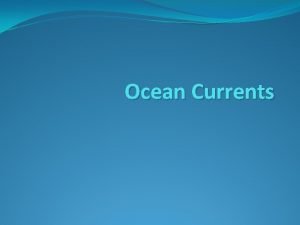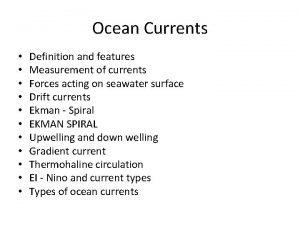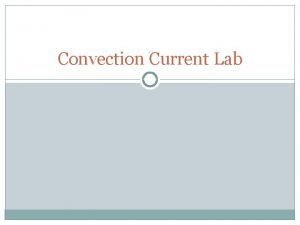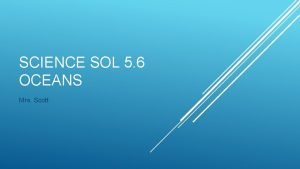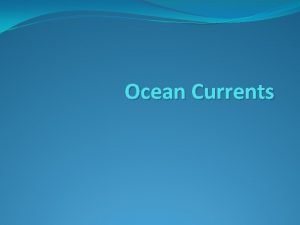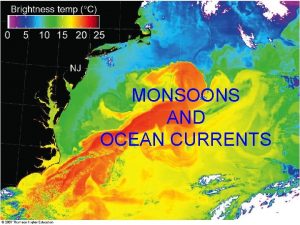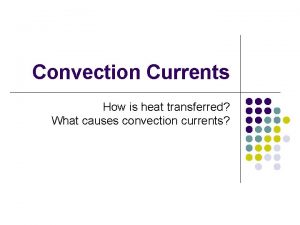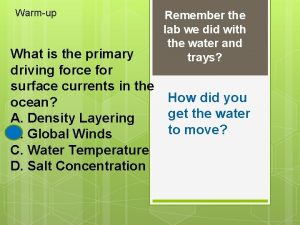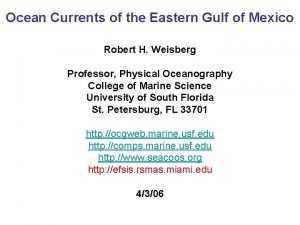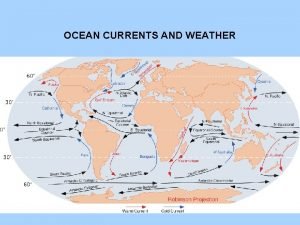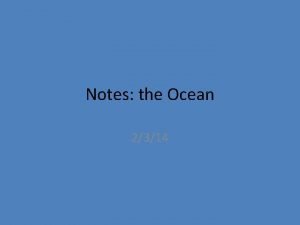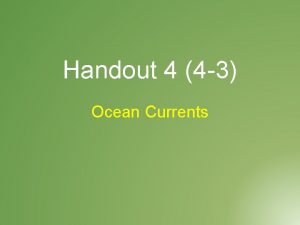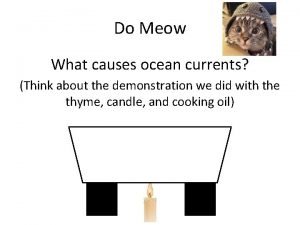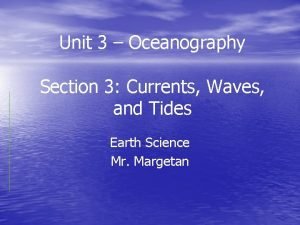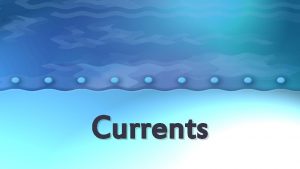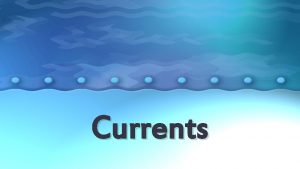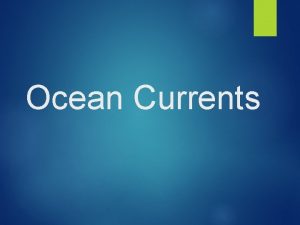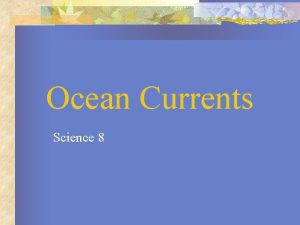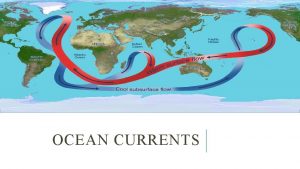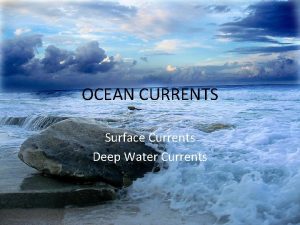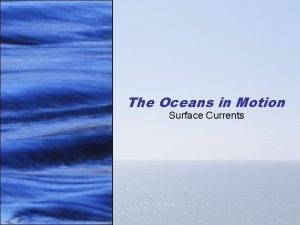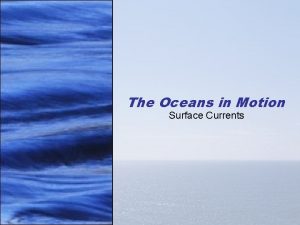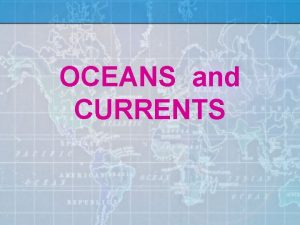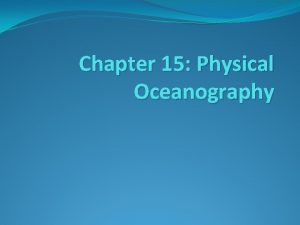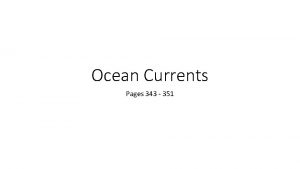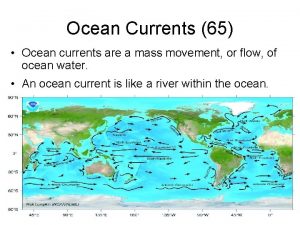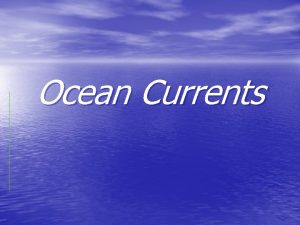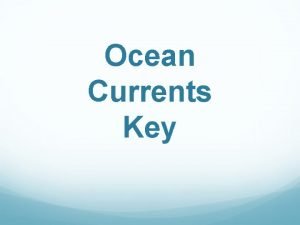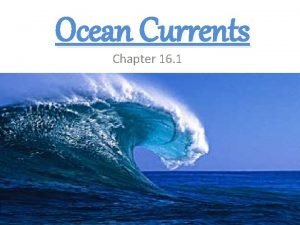Oceanography Physical Dynamics of the Oceans Ocean Currents



















- Slides: 19

Oceanography Physical Dynamics of the Oceans

Ocean Currents • Currents are the circulation of water throughout the oceans. • There are two main types of ocean circulation: wind-driven currents and thermohaline circulation.

Wind-Driven Currents • Wind-driven currents move the upper parts of the ocean horizontally by wind action that strikes the ocean surface. • The two major wind driven currents near North America are the gulf stream and the California current.

The Gulf Stream • The gulf stream is a major wind- driven current that moves warm water from the Caribbean Sea up along the east coast of the United States, where it eventually reaches Greenland.


California Current • The California current is a wind-driven current which moves colder arctic waters southward. It brings cold water down the western coast of North America.



Upwelling • Upwelling is another important aspect of wind-driven currents that occurs when winds move warm surface waters away from the equator or the coasts of continents and allows nutrient-rich colder water to replace the warm nutrientdepleted water.

Deep Ocean Circulation • Deep ocean circulation is called thermohaline circulation. “Thermo” means heat and “haline” means salt. • This type of ocean circulation is driven by temperature and salinity differences in the water. • It allows for nutrients and heat to circulate throughout the world’s oceans.


Tides • Tides are the cycling rising and falling of the Earth’s ocean surface caused by tidal forces of the Moon and the Sun acting on the Earth. • Tides cause changes in the depth of the sea and also produce oscillating currents known as tidal streams.

High Tide Low Tide

Ocean Surface Waves • Surface waves occur in the upper layer of the ocean. • They usually result from wind or geologic effects and can travel thousands of miles before striking land. • They range in size from small ripples to huge tsunamis.

Factors That Influence Formation of Wind Waves • Wind speed. • Distance of open water that the wind has blown over. • Length of time the wind has blown over a given area. • The greater each of these variables, the larger the wave.

How Waves Are Measured • Height (From trough to crest. ) • Wavelength (From crest to crest. ) • Period (Time interval between arrival of consecutive crests at a stationary point. )

Breaking Waves • A breaking wave is a wave whose base can no longer support its top, causing it to collapse. • A wave will break when it enters shallow water or when two wave systems oppose and combine forces. • These are the waves that are surfed.


 What is deep current
What is deep current Citlalli dominguez
Citlalli dominguez Ocean currents vocabulary
Ocean currents vocabulary What are ocean currents
What are ocean currents Convection currents definition
Convection currents definition Brainpop climate types
Brainpop climate types Ocean currents
Ocean currents Coriolis force effect on ocean currents
Coriolis force effect on ocean currents Ocean currents
Ocean currents Cenozoic mammals
Cenozoic mammals What causes convection currents?
What causes convection currents? What is the primary driving force behind surface currents?
What is the primary driving force behind surface currents? Rubber ducks ocean currents activity
Rubber ducks ocean currents activity Ocean currents gulf of mexico
Ocean currents gulf of mexico Www.gulfstreamshutdown.com
Www.gulfstreamshutdown.com What are ocean currents
What are ocean currents Surface ocean currents
Surface ocean currents What are ocean currents
What are ocean currents Ocean currents
Ocean currents Ocean currents
Ocean currents


